When it comes to interior design, grey is a particularly versatile colour that can be used in a variety of ways. From a subtle light grey to dark charcoal and beyond, this neutral hue is a popular choice for walls, furniture, and decor. But what colours go with grey? The honest answer is almost anything.
One of the great things about grey is that it pairs well with both warm and cool colours. For a classic monotone look, black and white are a safe bet. However, if you want to add some colour to your interior space, there are plenty of options.
Soft pastels like pink, blue, and green can create a calming and serene atmosphere, while bold and bright colours such as red, yellow, and orange can add energy and vibrancy.
Other popular colours to pair with grey are metallics like gold, silver, and copper. These accents can add glamour, elegance and sophistication to any room.
Additionally, natural materials like wood, leather, and linen complement grey tones and also add texture and form.
Understanding the Colour Grey
As a neutral tone that pairs with so many other colours, grey is popular in both interior design and fashion. It is a colour choice that is capable of creating a variety of moods and styles.
Shades of Grey
Grey comes in a wide range of different shades. Lighter shades of grey, such as dove grey and pale grey, create a soft and calming atmosphere, while darker shades of grey, such as charcoal grey and slate grey, offer a more dramatic and moody ambience.
What is Greige?
The term "greige" is a combination of the colours grey and beige, together they create a unique hue that falls somewhere between the two shades.
Greige can vary in tone, ranging from warm to cool undertones, making it incredibly versatile and adaptable to various design styles.
Whether used as a wall colour, furniture upholstery or within accents throughout a room, greige offers a subtle yet stylish aesthetic that has become increasingly sought-after in modern interiors.
Grey Colour Theory
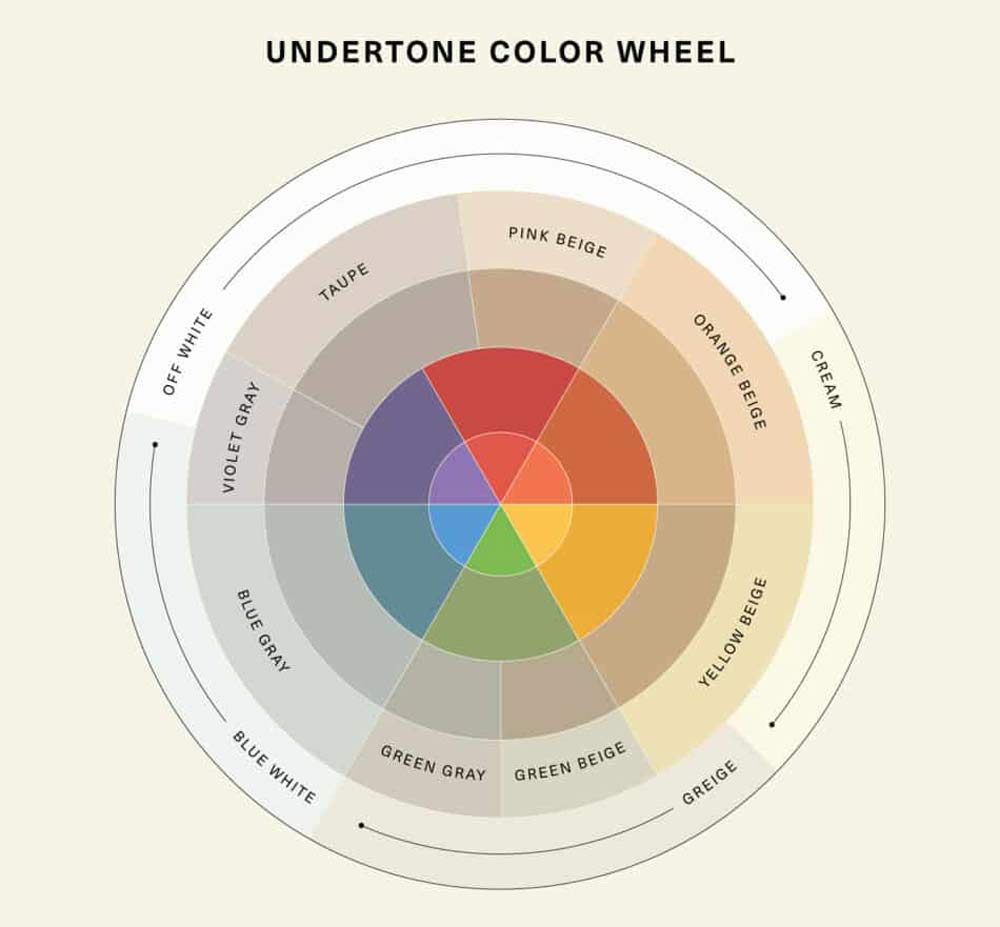
Image credit: 1stdibs.com
Grey is often associated with neutrality, balance, and simplicity. In terms of colour theory, grey is considered an achromatic colour, meaning it has no hue or chroma. It is seen as a calming and soothing colour that can evoke feelings of stability and serenity.
Concerning psychology, grey is sometimes associated with feelings of indifference or depression when used excessively or without careful consideration. However, when used appropriately in combination with other colours, grey can create a sense of harmony and elegance. It can also enhance the impact of brighter or more vibrant colours by providing a perfect contrast.
Grey also plays a role in visual perception. It has been observed that objects viewed against a grey background may appear more vivid and saturated compared to the same objects viewed against other coloured backgrounds. This effect, known as simultaneous contrast, highlights how colours interact with each other and how our perception of them can be influenced by their surroundings.
Grey in Different Rooms
Grey is an excellent colour to use for decorating various rooms in your home. Here are some specific ideas that you may wish to follow:
Grey in the Living Room
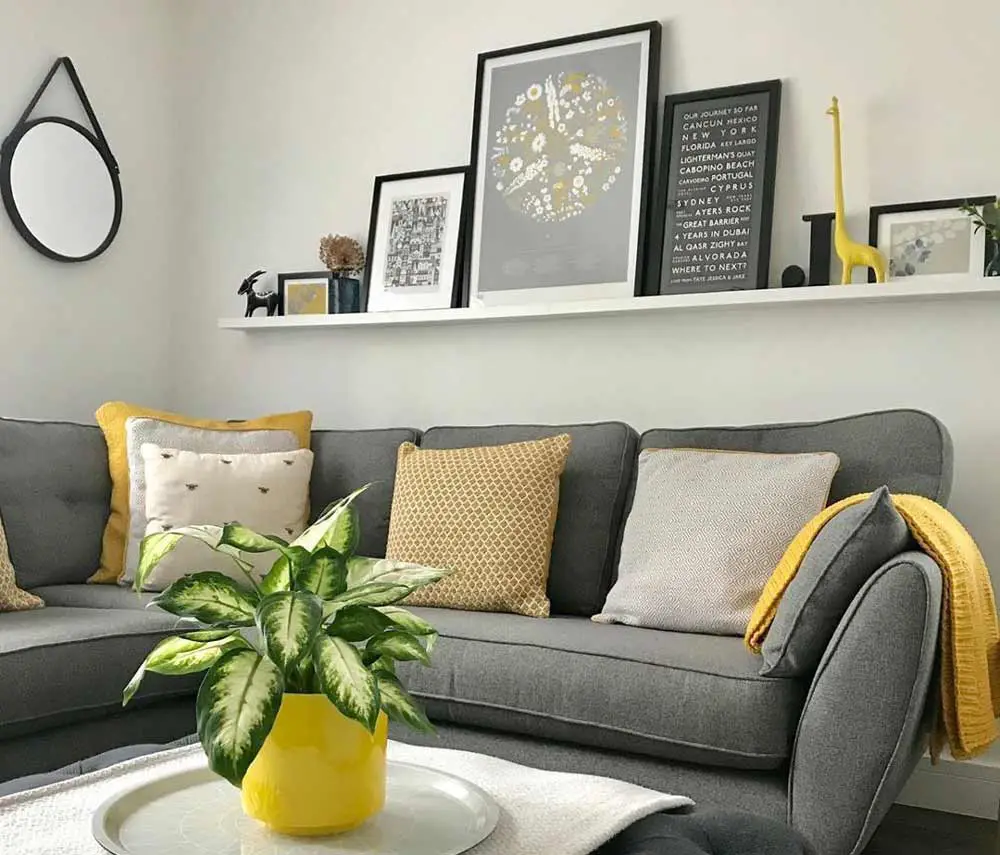
Image credit: pinterest.co.uk
Grey can be used to create a calm and sophisticated look and feel to a living room space and further pairing it with bold colours such as yellow or red creates a modern statement look.
Grey also works well with metallic accents such as silver or gold. Using grey on the walls, sofa or curtains, and then adding colourful cushions or rugs will complete the look.
Grey in the Kitchen
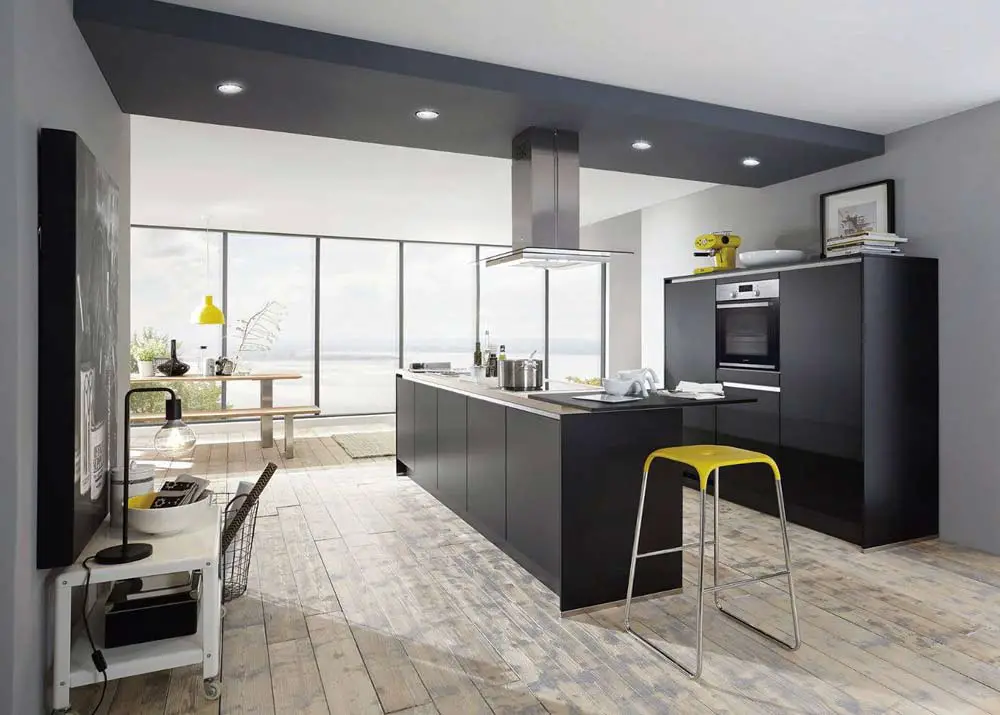
Image credit: joshuadonaldkitchens.co.uk
Dark Grey is a popular colour for kitchen cabinets and walls and combines well with white, black, and other neutral colours.
With the addition of stainless steel appliances and the use of clean lines, a grey kitchen can look modern and sleek. You can also add a pop of colour with bold and colourful kitchen accessories such as a bright kettle or toaster, or using furniture and decor pieces as they have in this example.
Grey in the Bathroom
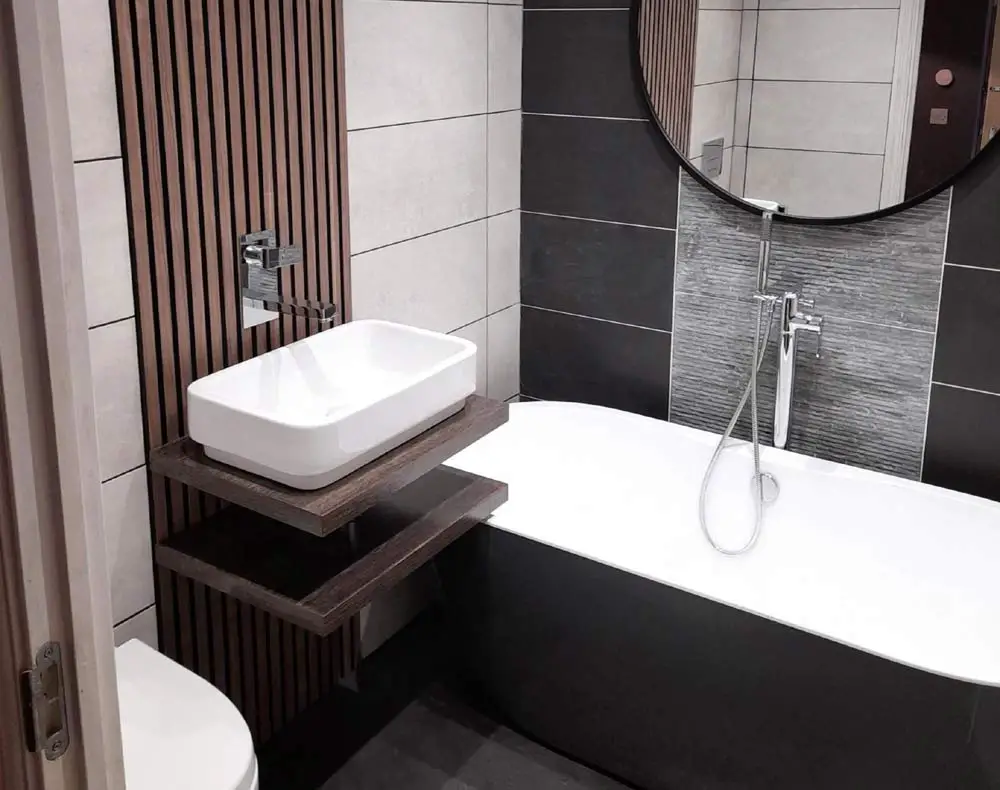
Image credit: thewoodveneerhub.co.uk
Using grey in a bathroom affords the space a spa-like atmosphere. Black and white tiles and accessories work particularly well as accents, giving the room a classic and timeless look.
You can also add natural elements such as wood or stone to create a cosy, warm and inviting ambience.
Grey in the Bedroom
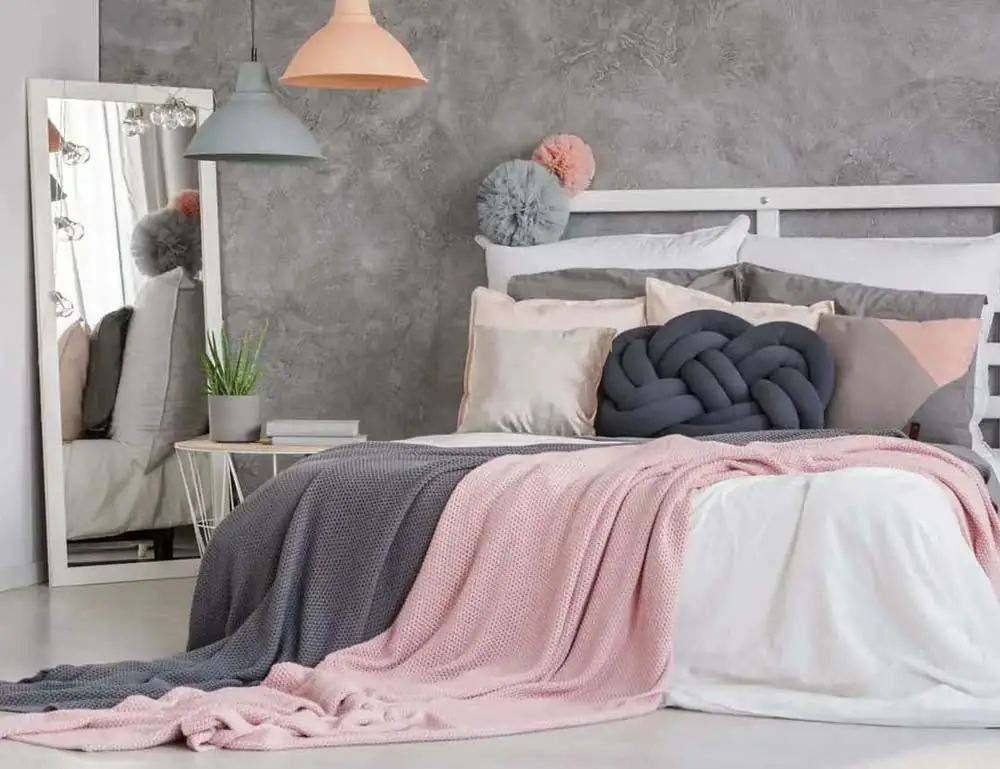
Image credit: athomedivas.com
In the bedroom, using grey as a dominant colour adds a calming and relaxing atmosphere. It also pairs well with pastel colours such as blush pink or blue, giving the space a soft and romantic look.
For a similar look, use grey on the walls, bedding or curtains, and then add colourful cushions, throws or artwork to complete the look.
Grey in the Dining Room
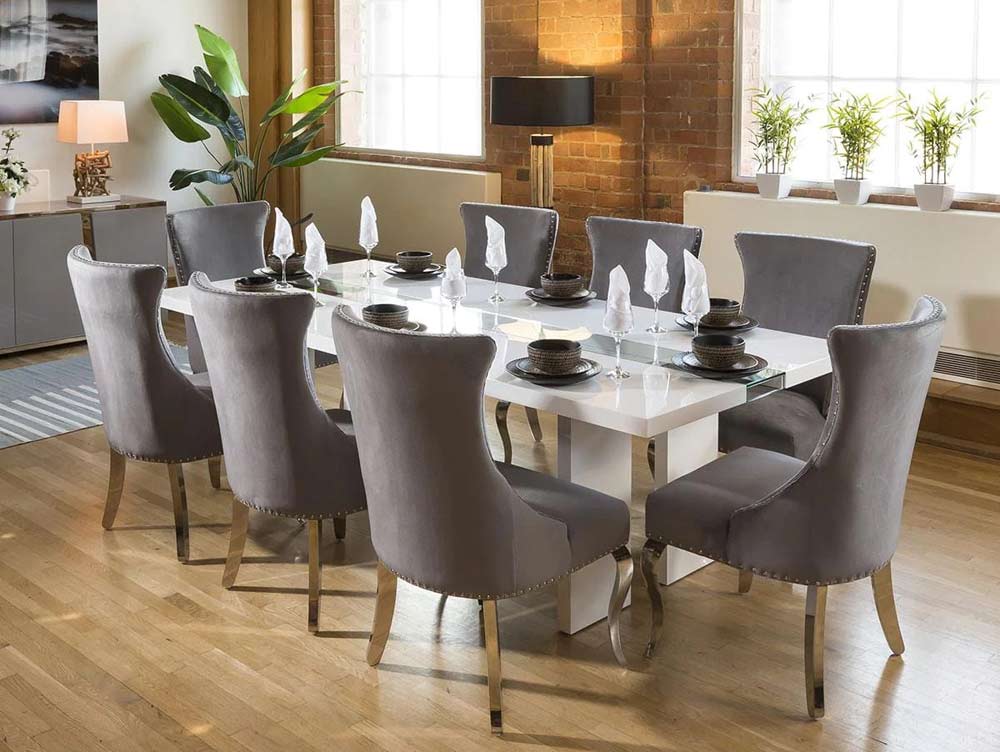
Image credit: quatropi.com
Grey is a perfect colour choice for adding a sophisticated and elegant look to any dining room and pairs well with metallic accents such as silver or gold, creating a luxurious look.
Adding a pop of colour with colourful tableware or artwork is a great way to take away the coldness and monotony of using grey as your sole colour choice.
Complementary Colours for Grey
Let's now explore some of the best complementary colours for grey. I have divided this into three sub-sections: Neutral Shades, Bold and Vibrant Colours, and Cool and Calming Colours.
Neutral Shades
Neutral shades are an excellent choice for use with grey. They create a timeless, sophisticated look that is both elegant and understated. Some of the best neutral shades to pair with grey include:
- White: This classic combination creates a clean, fresh look that is perfect for modern interiors.
- Black: For a more dramatic look, pair grey with black. This combination is particularly effective in industrial-style interiors.
- Tan: A warm, earthy shade, tan pairs well with cool grey tones to create a relaxing, natural feel.
Bold and Vibrant Colours
For a more daring look, consider using grey with bold, vibrant colours. This combination creates a striking contrast that is both eye-catching and modern. Some of the best bold and vibrant colours to pair with grey include:
- Burnt Orange: This warm, spicy shade creates a cosy, inviting feel when paired with grey.
- Navy Blue: A rich, deep shade, navy blue pairs well with warm greys to create a sophisticated, nautical look.
- Lime Green: This bright, zesty shade adds a pop of colour to grey interiors, creating a fresh, modern feel.
Cool and Calming Colours
For a calming, relaxing look, consider pairing grey with cool colours. This combination creates a serene atmosphere that is perfect for bedrooms and bathrooms. Some of the best cool colours to pair with grey include:
- Sage Green: A soft, muted shade, sage green pairs well with warm greys to create a natural, calming feel.
- Turquoise: This bright, bold shade adds a touch of excitement to grey interiors, creating a playful, beachy feel.
- Soft Pink: A gentle, soothing shade, soft pink works well with cool greys to create a calming, feminine look.
The Effect of Light on Grey
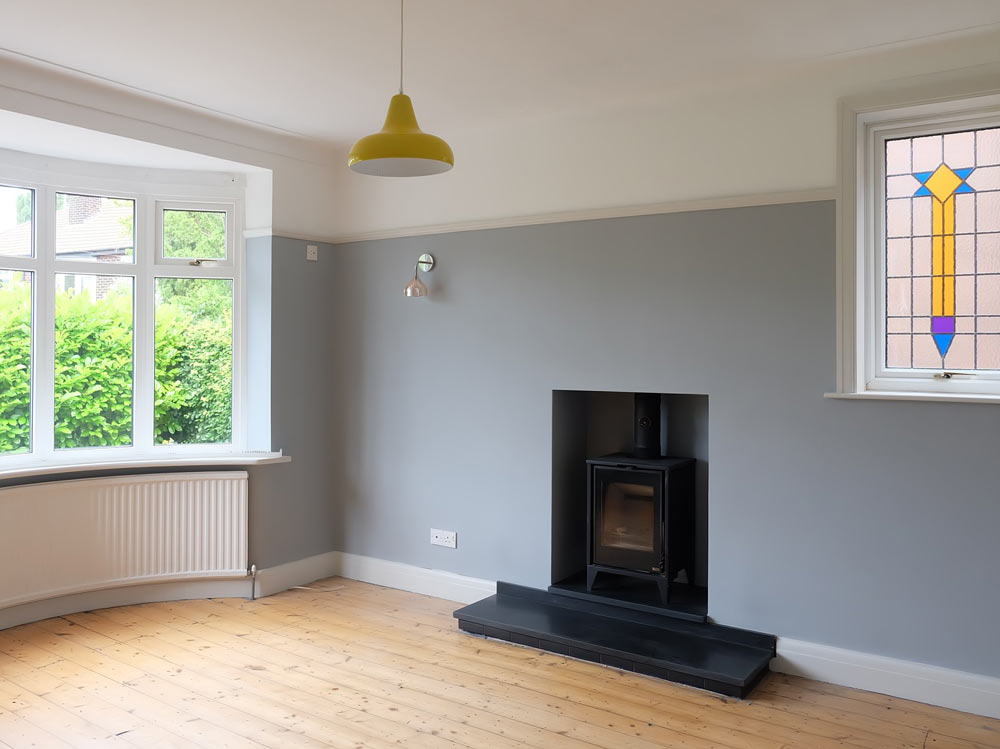
Image credit: dottydishes.com
Light plays a crucial role in how the colour grey is perceived and experienced, this is particularly the case with interior design, as the intensity and quality of light sources can greatly affect the appearance of grey tones in any space.
Natural daylight can have different effects on grey depending on its intensity and direction. Bright, direct sunlight tends to cast a cool bluish tone over grey surfaces, while soft, diffused light can add warmth and depth to the colour. This means that the hue of grey can shift throughout the day as the quality of natural light changes.
Artificial lighting also influences how grey is viewed in interior spaces. Cool white or blue-toned lights can make grey appear crisper and cooler, due to the blue undertones, while warm yellow or amber lights can create a cosy and inviting atmosphere. Thus adding warmth to the grey room surfaces.
The reflective properties of the materials within a space will also impact how light interacts with any grey surfaces. Matte finishes tend to absorb more light, creating a softer and less reflective appearance for grey. On the other hand, glossy or metallic finishes reflect more light, making grey appear brighter and shinier.
Grey in Different Styles
Grey is a versatile colour that can be used in various styles of decor. In this section, I will explore how grey can be incorporated into contemporary, traditional, minimalist, and industrial decor.
Using Grey in a Contemporary Setting
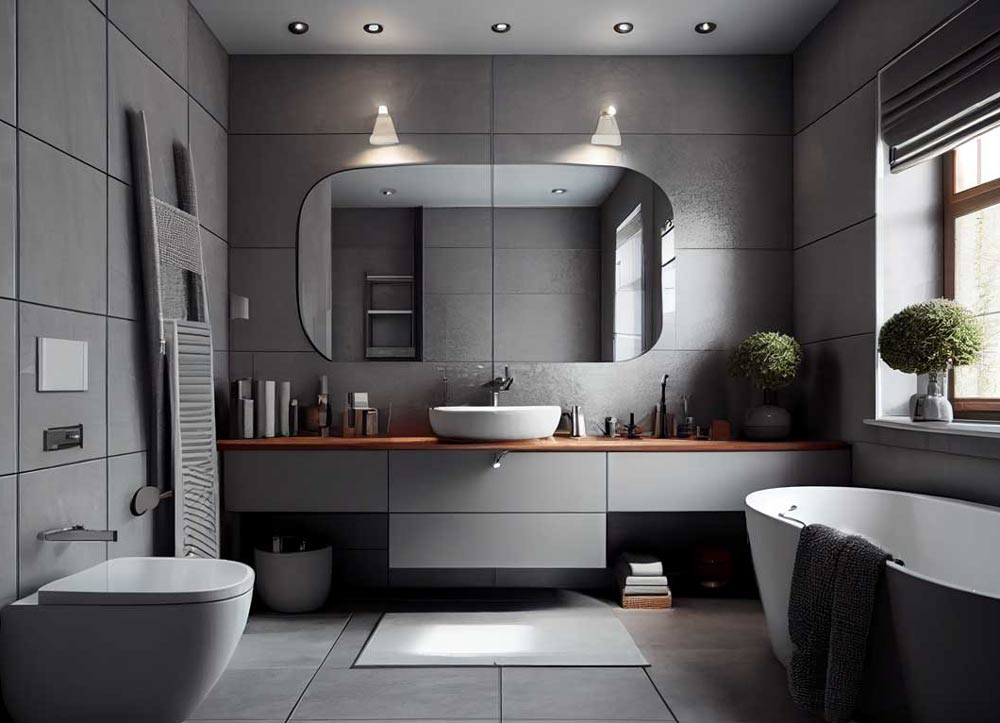
Image credit: artfasad.com
Grey is an excellent choice for contemporary decor as it is a neutral colour that can be paired with many other colours to create a serene and sophisticated environment.
In contemporary design, grey is often used as the dominant colour, with accents of black, white, and metallics.
How to Use Grey in a Traditional Space
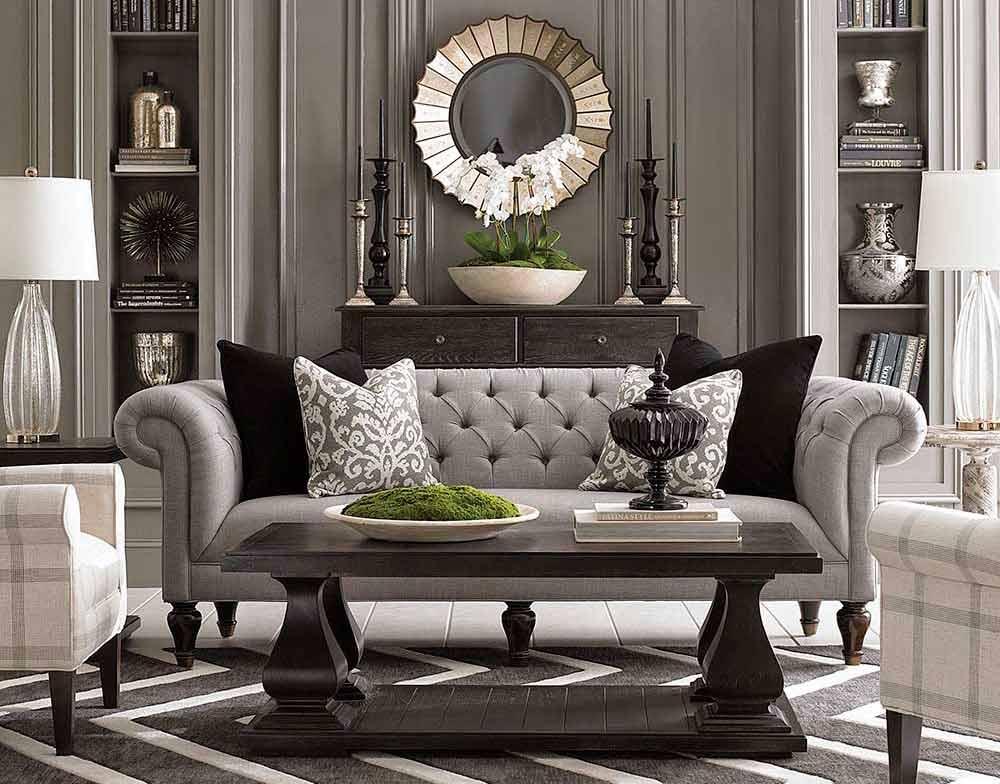
Image credit: irisjzhang.blogspot.com
In traditional decor, grey is often used as a neutral backdrop to showcase the room's other colours and patterns. When paired with rich colours such as burgundy, navy, and forest green, grey adds depth and visual interest to a room.
Minimalist Interior Design Using Grey
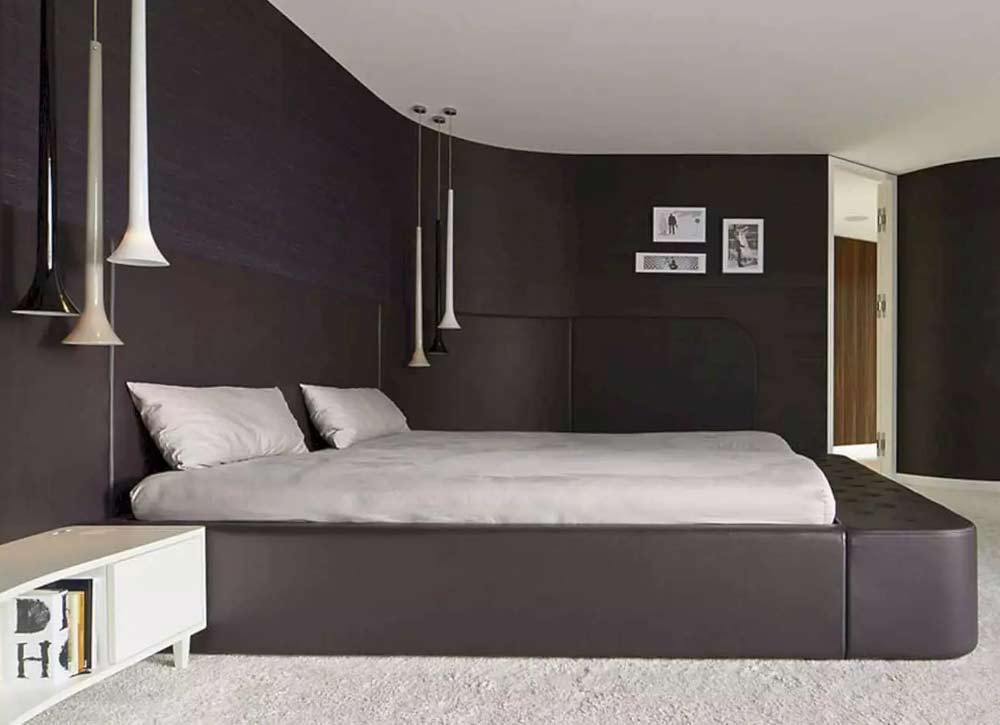
Image credit: futuristarchitecture.com
In minimalist design, grey is regularly used as the dominant colour, with accents of white and black thrown into the mix. Grey can also be paired with natural materials such as wood and stone to add warmth and texture.
Grey Industrial Design Schemes
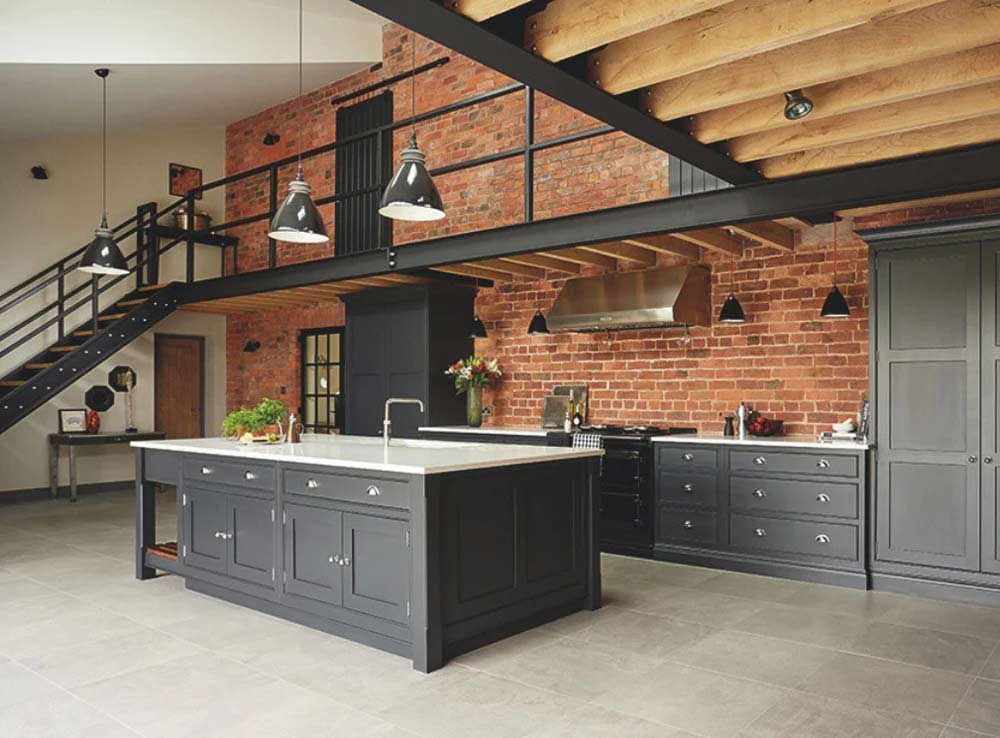
Image credit: mywarehousehome.com
Grey is well suited to industrial decor schemes as it offers a cool and edgy atmosphere. In industrial design, grey is again used as the dominant colour, with accents of both black and metallics. It also works well with natural materials such as wood and concrete which are the main components of an industrial design.
My Final Thoughts
Grey is a versatile colour that can be paired with a wide range of hues to create differing moods and styles.
One of the benefits of pairing grey with other colours is that it can create a sense of balance in a room. For example, combining grey with a bold, eye-catching colour like bright red or yellow can help to tone down the intensity of the brighter shade.
Grey is also a great colour to use as a backdrop for dramatic jewel tones, such as emerald green or sapphire blue. These colours can pop against a grey background and create a luxurious feel.
If you're looking to create a natural, earthy vibe, consider pairing grey with terracotta or ochre. These warm earth tones complement grey beautifully and can create a cosy, inviting atmosphere.
Overall, the key to successfully pairing colours with grey is to experiment and find what works best for you and your space.
Frequently Asked Questions
What colours complement light grey?
Some of the colours that complement light grey include pastel shades such as baby blue, pale pink, and lavender. Other colours that go particularly well with light grey are earthy tones like beige, tan, and cream.
What are some good accent colours to pair with grey?
Popular accent colours to pair with grey include bright shades like yellow, red, and orange and jewel tones such as emerald green, sapphire blue, and ruby red.
What colours go well with grey walls?
Grey walls provide a great neutral backdrop for many other colours. Some of these include crisp white, beige, and a range of other neutral colours. Bold accent colours like red, yellow, and blue can also look great against grey walls.
How can I incorporate grey into my colour scheme?
You can use grey as a neutral base colour and contrast it with bold accent colours like red or yellow. Alternatively, you can use grey itself as the accent colour and pair it with other neutral colours such as white or beige.
What clothing colours match with grey?
Grey is a popular colour for clothing because it is neutral and versatile, meaning that it will pair well with many other items clothing items.
Some of the colours that match well with grey clothing include white, black, and other neutral colours. Bold accent colours like red, yellow, and blue also work particularly well with grey clothing.
What colours can I pair with pink and grey?
Pink and grey is a popular colour combination that creates a soft, feminine look. Some of the colours that work well with pink and grey include white, cream, and other neutrals. You can also pair them with bold accent colours such as navy blue or emerald green.



 Author: Matthew Chiappini
Author: Matthew Chiappini